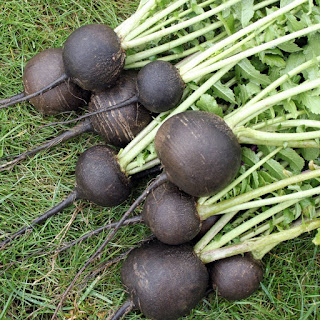Preserving tomatoes part 1
Pretty much everyone, from beginner gardeners to the experienced, just love growing tomatoes.
It's easy to see why, they are so rewarding and easy to grow, practically jumping out of the ground as soon as you sow them.
Despite all the problems that can beset your tomato crop, we still grow them year after year, because nothing beats the taste of a home grown tomato.
Fruit Fly?
If you have had tomatoes but they were affected by fruit fly, then use exclusion bags, or net the whole tomato bed.
 |
| Black Krim photo M Mossakoska |
So you might be wondering, but what about pollination?
Tomatoes are mostly self-pollinated, so the pollen drops from the anthers to the tip of the pistil in each flower.
Wind helps this to happen by vibrating the flowers, ensuring the pollen loosens and falls.
- But if you've covered the bed with netting, it's still easy to pollinate the flowers.
Just whack the stems with a stick to release the pollen, or use an electric toothbrush into the flower to move the pollen from the stamens to the pistil.
So now you planted, fertilised and then harvested, what next?
There's been a bumper season of tomatoes but what do you do with them all?
 |
| Passata photo M Mossakowska |
Tomato types and can they be preserved?
Salad tomatoes-not suitable for drying but can be made into passata.
Beefsteak tomatoes-large and fleshy, good for grilling, dehydrating and making passata. Margaret's favourite is Cherokee Purple.
Roma tomatoes-the most commonly used to make a sauce or passata.
Grape or cherry tomatoes- great if you don't want to bother with fruit fly exclusion netting. Not for drying, but eating fresh mainly. Good for beginner gardeners.
The was Margaret Mossakowska director of
www.mosshouse.com.au and sometimes a guest on Gardening Australia TV
Preserving Tomatoes and Other Food Part 2
Last week on the good earth segment, we talked about which tomatoes are best for passata, and preserving. |
| Margaret's cut tomatoes for grilling. photo M Mossakoska |
It's time to delve into the world of dehydrating not just your tomatoes, but apples and other abundant fruits in your garden.
Why Dehydrate?
But what about dried tomatoes?
Can you do that without buying one of those fancy air dryers?
- Dehydrating food preserves most of the nutrients-only losing 3-5% of the nutrients and reduces the volume of your fruit. Dehydrating temperatures can be as low as 30 degrees.
- Canning loses 60 - 80% of nutrients.
- Grilling or making passata, also loses nutrients but not as much as in canning.
Sunlight is not the answer for dehydrating, because UV light affects the nutrients of food.,
The simplest method is to place the fruit on flyscreens or similar and place under shade, or as Margaret does, under a metal roof, perhaps a back porch.
 |
| Dehydrated apples. photo M. Mossakowska |
- The next choice is to use a commercial dehydrator.
Choice magazine has reviewed dehydrators.The
overall score is made up of: drying performance (60%) and ease of use (40%).
You can see the whole article on the Choice Magazine website (you either pay
subscription or pay just to view the article): https://www.choice.com.au/home-and-living/kitchen/benchtop-cooking/review-and-compare/food-dehydrators or get a copy at a local library for free.
The listed prices are
higher than in most shops. Margaret has the Ezidri FD500 model brand new from an
op-shop for $10!
Margaret's Super tip for storing the dried fruits
It's often humid in our kitchen and pantries.
So the best idea, put the dried fruit and jar in the oven after cooking has finished, so the air inside the jar dries as well.
Store in smaller containers so every time you open it, you are letting air in.
Use special moisture absorbing sachets that contain silicon, or make your own sachets from organza material filled with dry rice grains.
Let's listen to the interview.
The was Margaret Mossakowska director of
www.mosshouse.com.au and sometimes a guest on Gardening Australia TV
If you have any questions about preserving tomatoes drop us a line to
realworldgardener@gmail.com or write in to 2RRR P.O. Box 644 Gladesville NSW 1675.





















